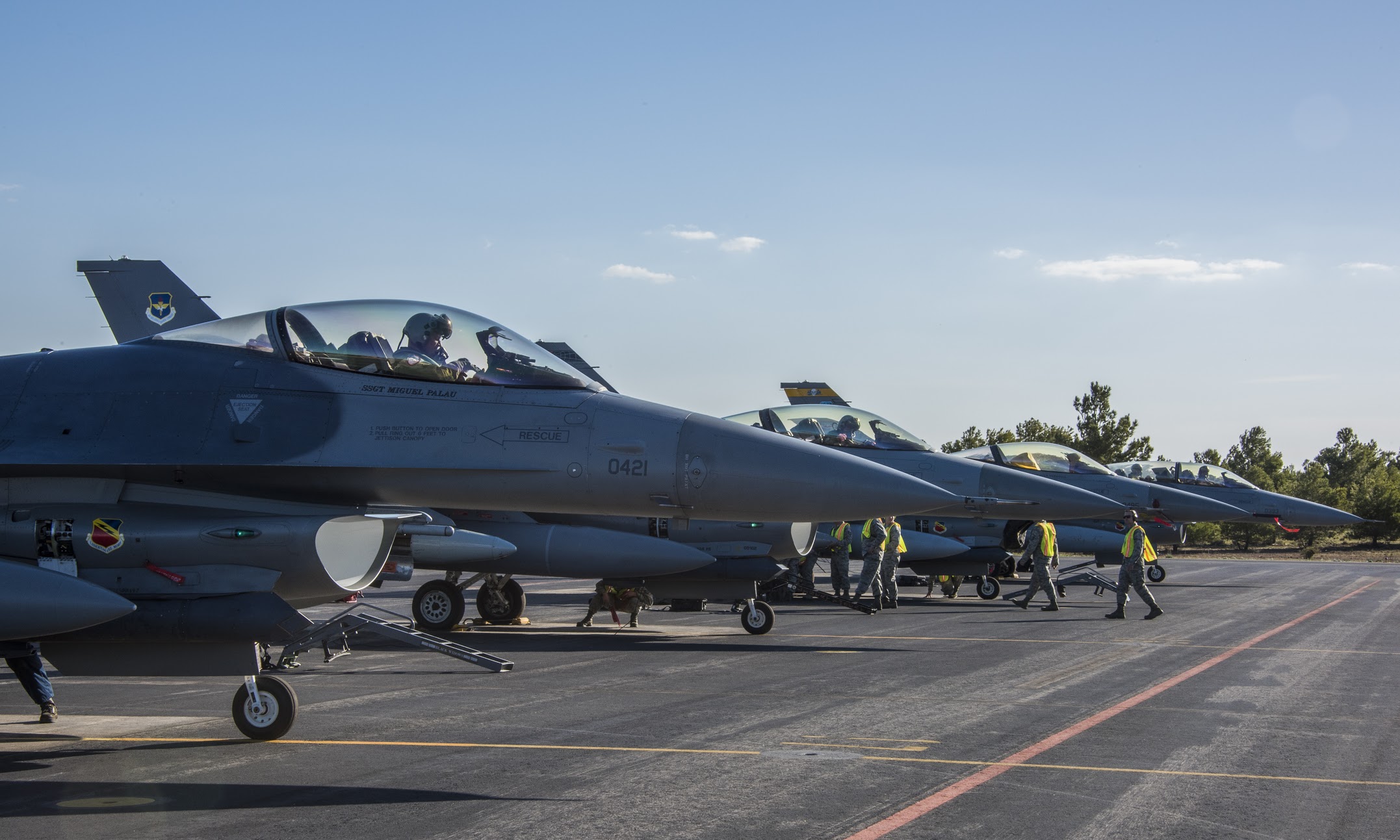The Air Force planned to transfer two F-16 squadrons from Hill AFB, Utah, to Holloman AFB, N.M., in an effort to bolster pilot production and close the fighter pilot shortfall. However, under a continuing resolution, the service could be forced to delay the standing-up of that mission. Here, the F-16s in April 2017 conduct their final deployment while assigned to Hill, which will be transitioning to the F-35 strike fighter. Air Force photo by SrA. Justin Fuchs.
A continuing resolution to fund the federal government will produce losses in readiness, cancelled or reduced training, and delays in new starts and military construction, Secretary of Defense Jim Mattis said in a Sept. 8 letter to congressional leaders. Mattis penned the letter in response to a request from Sens. John McCain (R-Ariz.) and Jack Reed (D-R.I.), the chairman and ranking member of the Senate Armed Services Committee.
The same day President Donald Trump signed a three-month CR into law, Mattis warned Congress that a CR “drastically reduces the ability to respond to urgent requirements or to address funding gaps that damage readiness.” Under the CR, the Department of Defense will continue to fully support forward-deployed operations and units, Mattis said, but only at the cost of placing “a great burden on DOD’s foundational capabilities.” He said this shift creates the heaviest burden “on training, readiness and maintenance, personnel, and contracting.”
The impact on training, Mattis said, begins “immediately, within the first 30 days” of a CR, and by 90 days, “the lost training is unrecoverable due to subsequent scheduled training events.” These losses are first felt in “individual and unit-level training,” but the effect snowballs when those units “enter the major exercises less prepared.”
For the Air Force, the CR means a scramble to “preserve core readiness training for deployed or next-to-deploy units, at the cost of institutional training and flying hours.” Specifically, Mattis said the CR would result in a “lack of funds to stand-up two F-16 training squadrons,” which would “further reduce pilot production” for the service.
Air Force spokeswoman Ann Stefanek confirmed these squadrons are “interim training squadrons” the service is planning to stand up at Holloman AFB, N.M., with aircraft previously housed at Hill AFB, Utah, in an effort to “increase pilot production.”
Hill held a ceremony on Sept. 8 to mark the ending of the operational F-16 mission there, freeing up the aircraft for the new training mission at Holloman. While Hill spokesman Donovan Potter said that 66 of Hill’s 79 F-16s have already been transferred to Holloman and associated bases, Stefanek said that a continuing resolution, depending on its length and funding levels, could delay the standing-up of the new mission.
A CR would also affect the Air Force in the areas of “depot maintenance” and “munitions procurement,” Mattis said without offering further details.
“No new major military construction projects can be initiated using CR funds,” Mattis said, a reality that would affect 16 Air Force projects.
Also under a CR, “there are generally no new starts, and no production rate increases” for larger acquisition programs. Six such Air Force programs would be impacted, Mattis said, including “multiple F-15C and F-16 upgrades and the Joint Space Operations Center mission system.”
While Mattis was clear on the damage it will do to the military, he also noted in the letter that a CR “avoids a government shutdown and provides opportunity for a long-term solution that lifts the [Budget Control Act] caps.” This is crucial, he said, because “in the long term, it is the budget caps mandated in the [BCA] that impose the greater threat to the Department and to national security.”
Continuing to fund the Pentagon at the reduced levels of BCA spending “reverses the gains we have made in readiness,” Mattis said. Unless Congress gives the DOD relief from the BCA caps by passing a new budget deal that authorizes more military spending, “our air, land, and sea fleets will continue to erode.” If that happens, Mattis said, the inability of the Pentagon to continue restoring readiness “may prove fatal in a future conflict with major-power adversaries.”
